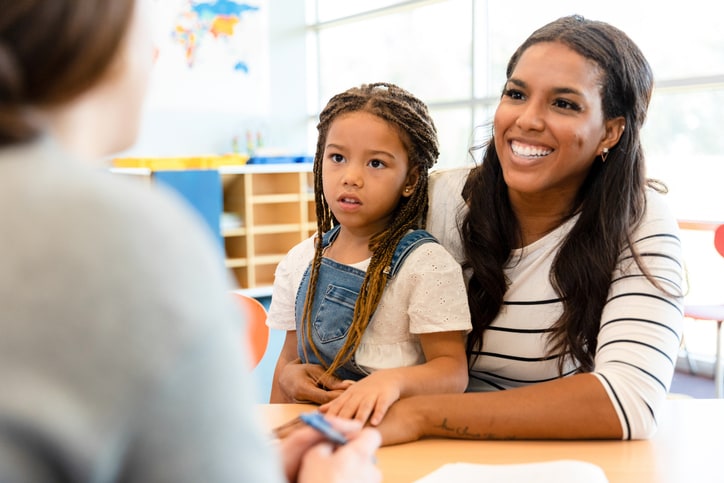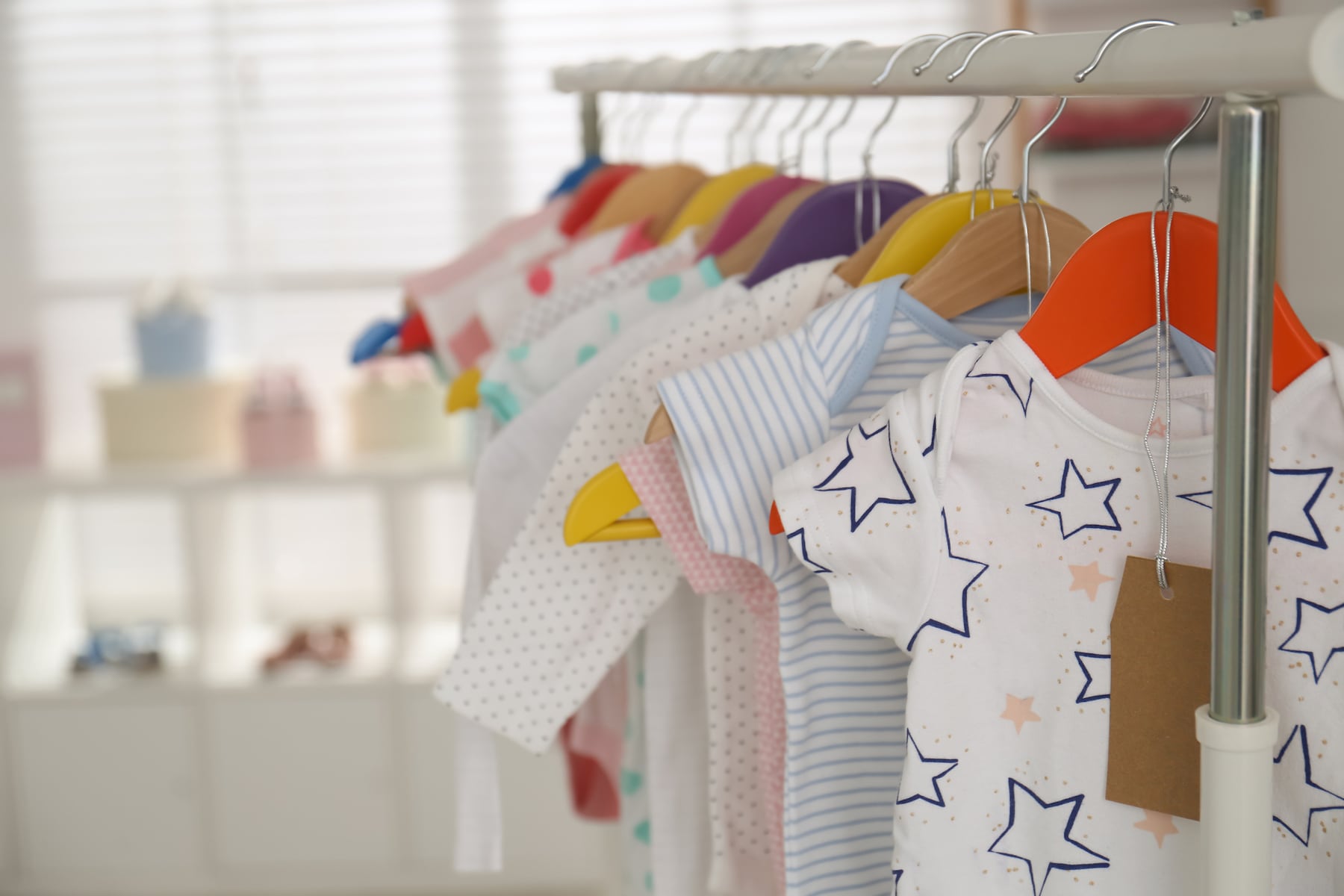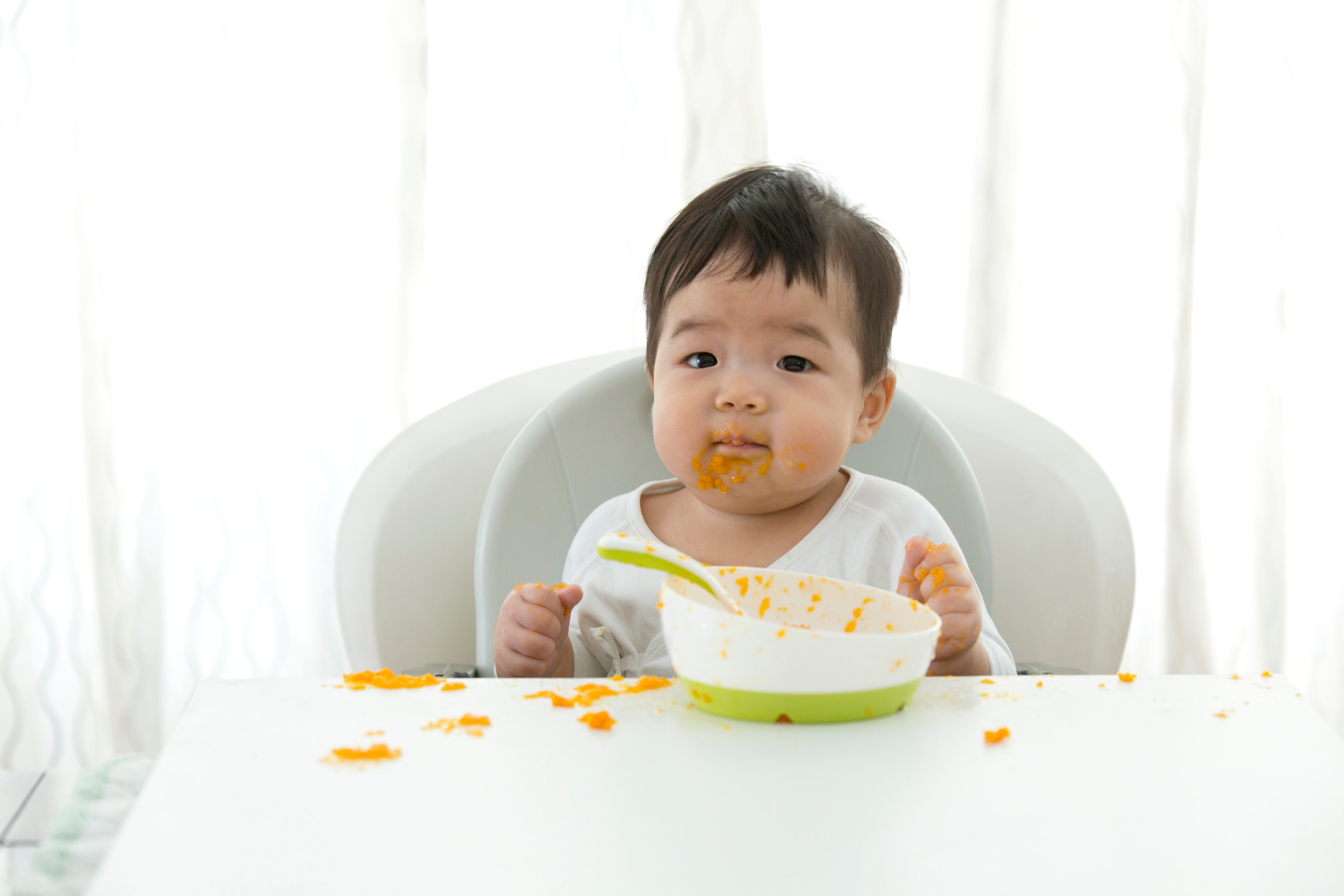Ever wondered what a baby thinks about all day? Anyone who’s been stared at by a baby out in public knows how intense their focus can be, but that doesn’t make it any easier to decipher what’s going on in that adorable little head.
Interpreting the infant brain is no easy feat, and many researchers devote their careers to trying.
Still, sophisticated research designed in the past few decades has enabled us to pick up many more clues about what goes on in the minds of the youngest among us. Here are some fascinating facts about infant cognitive development, and how you can apply that knowledge to caregiving.
1. Babies think a lot about you
What do infants think about? Well, before they can learn how to navigate the world, their main challenge is to figure out what — and who — to pay attention to, says Michael Goldstein, a professor of psychology at Cornell University, focused on early communication. They still have to learn that just because something is animated, like a cat or curtain blowing in the breeze, it doesn’t mean it’s a reliable source of information. (While not a scientific depiction, the classic children’s book “Are You My Mother?” comes to mind). What is a good source of info? Baby’s parents and caregivers.
The fact that a newborn can only see clearly about 12 inches out means they’re focused on what’s right in front of them, which is often a human face. So they are studying your face, expressions, words and behavior. Research shows that, from birth, babies prefer to look at people who engage them in a mutual gaze. To bond with them, caregivers can try different engaging activities, such as reading books aloud to them and playing with their hands.
2. Babies are absorbing language long before they can speak
While most babies don’t say more than a few words until well into their second year, they begin listening to people talking — especially their mothers — before they’re even born. In one 2013 study, researchers found evidence to suggest that when fetuses heard a certain word repeated frequently while in the womb, they recognized that word after birth.
Another 2019 study suggests that even days-old newborns can pick out individual words from a string of continuous speech while an earlier 2012 study found evidence that beginning at 6 months, babies may know the meaning of many common nouns.
These findings coincide with Goldstein’s explanation of how babies are particularly tuned into the people around them. Therefore, it’s worth talking and singing to babies, even if they can’t verbally respond yet.
3. Babies learn language from “conversation”
When babies babble, it’s an opportunity to communicate. A 2014 study that followed babies from between 8-14 months found that when caregivers “respond” to babbling by mimicking sounds or expressing interest in what the baby is looking at or playing with, they can help support language development. The trick is to respond immediately after the baby speaks to facilitate a “conversation” of sorts.
“Mere exposure to words is not enough,” says Goldstein. “The baby needs to be able to predict that their behaviors create reactions in you that are reliable.”
“Mere exposure to words is not enough. The baby needs to be able to predict that their behaviors create reactions in you that are reliable.”
— Michael Goldstein, professor of psychology at Cornell University
When we respond to baby’s babbling, we’re providing these little scientists with useful data to make hypotheses about how the world works. Even so, Goldstein says you need not worry about responding promptly 100% of the time a baby babbles. If you respond to them the majority of the time, that’s enough.
4. They conduct their own experiments
Much to a caregiver’s chagrin, many babies have a classic mealtime game of throwing their food and utensils onto the floor just to watch them drop. This is another example of how babies experiment, in this case with their surroundings in order to learn about things like gravity, says Goldstein. Parents and caregivers can facilitate exploration by having objects around to explore, giving children a diversity of experience.
For example, Goldstein says, “Babies like to bang stuff, so give them different kinds of things to bang, and they’re going to learn about solidity.” He explains, “They’re not going to have words for this stuff, but they’re going to be learning about how the world works nonetheless.”
“Babies like to bang stuff, so give them different kinds of things to bang, and they’re going to learn about solidity. They’re not going to have words for this stuff, but they’re going to be learning about how the world works nonetheless.”
— Michael Goldstein, professor of psychology at Cornell University
By the time babies reach 9-13 months, Goldstein says they will, in fact, be forming hypotheses about their experiments.
5. Babies cast moral judgment — and express preferences for those like them
When researchers showed infants a puppet show with both mean and helpful characters, 6-month-old babies showed preference for the helpers. Even though the show was simple — showing simple shapes with googly eyes that either pushed or helped another shape up a hill — this finding indicates that babies understand the difference between kindness and rudeness.
Meanwhile, similar findings from a later puppet show study on 9- and 14-month-olds showed that the babies preferred characters that helped other characters who were similar to them. (In this case, “similar” meant that the puppet demonstrated liking the same snack food as the baby who was being observed). However, this study showed a darker finding as well: the babies also preferred characters who treated those who were different from them poorly. According to the study abstract, “These findings suggest that the identification of common and contrasting personal attributes influences social attitudes and judgments in powerful ways, even very early in life.” But if nothing else, these studies show how closely babies are observing us and how we treat others.
6. Infants are still trying to figure out how objects work
When you suddenly hide a toy under a blanket, you might notice a baby looking confused. That’s because they don’t yet understand how to access the object. When the influential Swiss psychologist Jean Piaget published his theory on childhood in 1971, he proposed that infants lack object permanence — the ability to know that an object still exists even though you can no longer see or perceive it with other senses. Later research has shown the truth to be more complicated, says Elizabeth Spelke, a cognitive psychologist at Harvard University, who studies infant development.
“Babies know that objects exist when they move out of their field of view,” says Spelke. “If one object moves behind another, however, it takes babies a while — perhaps until around 8 months — before they figure out how to bring the object back into view.”
“Babies know that objects exist when they move out of their field of view. If one object moves behind another, however, it takes babies a while — perhaps until around 8 months — before they figure out how to bring the object back into view.”
— Elizabeth Spelke, cognitive psychologist at Harvard University
As far as how early babies grasp object permanence, one study showed evidence that infants as young as 2.5 months old realize that an object continues to exist after it becomes hidden.
Caregivers need not worry about proactively teaching this concept, says Spelke. Babies will learn from what you do and say without any deliberate teaching. Still, she adds, they may very well find a game of hiding things fun, especially if the object remains partly visible so that they can get to it with a direct reach.
7. Babies are sensitive to others’ experiences and emotions
A 2018 study capturing images of the brain activity of 7-month-olds found that distinct parts of their brains light up when their hands or feet are touched. What’s more, the “touch center” of their brains were similarly activated, albeit to a lesser extent, when they simply observed an adult’s hand and foot being touched. According to the study findings, this indicates that babies may be beginning to understand that their bodies are similar to others.
In a different study, researchers saw that babies respond to angry vocal tones even while they’re sleeping. So it’s wise to keep in mind how sensitive they are to others when they’re observing you and your interactions.
“They have a basic understanding of people who matter to them, and they engage with people from the beginning,” says Spelke.
8. Babies’ memories are developing throughout infancy
As adults, we devote much of our thinking to memories of past events, but a baby’s ability to remember information develops gradually through infancy, says Goldstein. Dozens of studies have attempted to find clues to how the development of memory works. For example, 2021 research utilizing functional MRIs provides evidence that babies as young as 3 months old (the youngest age they studied) engage the hippocampus — a part of the brain that’s essential for memory — when viewing a sequence of objects. The study is one of many that shows how utilizing newer technology can help us continue to expand our knowledge of the infant brain — an area that continues to surprise even the most seasoned experts.
In a 2014 study, 5-month-old babies remembered a novel shape more when the image was accompanied by someone speaking in a happy tone of voice (versus an angry tone). According to the researchers, this indicates that the babies’ memories of new information were affected by how that information was presented to them.
Another 2020 study showed that a baby’s ability to recall information is connected to their internal state. To test this, researchers demonstrated actions for 9-month-olds, then gave them the opportunity to perform those same actions 15 minutes later. If the babies were in the same internal state (ie. calm or alert) in both instances, they showed significantly greater ability to reproduce the actions than if they were calm in one and alert in the other.
More great resources for learning about the science of babies:
- “Babies” – Netflix docuseries breaking down the science of infant development
- “The Philosophical Baby: What Children’s Minds Tell Us About Truth, Love, and the Meaning of Life” by Alison Gopnik – Popular science book about babies and toddlers





